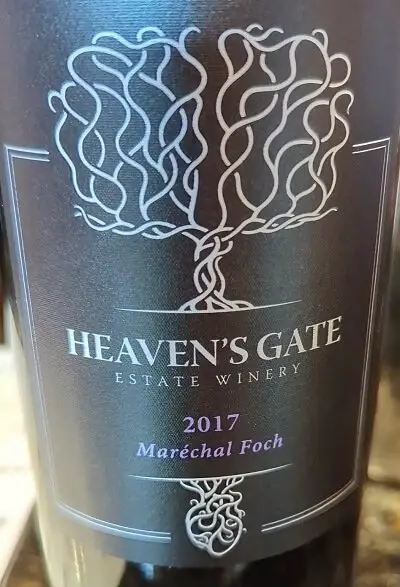
Pronunciation: teen-TOUR-ee-er
What Are Teinturier Grapes in Wine?
Teinturier grapes are a type of red grape that has naturally red flesh and juice. Most red grapes have clear flesh and white juice. Teinturier grapes have pigments called anthocyanins that gather within the grape’s juicy part itself, making it red.

Usually, these pigments are found only in the grape’s outer skin, which is why most dark-skinned grapes give clear grape juice when squeezed.
Interestingly, the beautiful red color of all red wine actually comes from anthocyanins leeched out of the grape skins. This happens during a process where the skins are crushed and left to soak with the juice for a few days while it ferments.
Fun Wine Fact: The term “teinturier” comes from French and means “to dye” or “to stain.” We have “tint” in English.
What Are Well-known Teinturier Grapes?
Well-known examples of teinturier grapes are Alicante Bouschet, Saperavi, and Chambourcin. Depending on where you are in the world, you’ve probably heard of at least one of these grapes.
Fun Wine Fact: California winegrowers planted vast acreage of Alicante Bouschet in California during Prohibition in the US. Its thick skins helped the grape travel well to winemakers on the East Coast. The grape’s deep color also helped stretch the wine that got watered down.
How Many Teinturier Grapes Are There?
There are at least 20 different teinturier varieties found around the world. Teinturiers are natural mutations.
Check out this fun list of teinturier grapes:
| Grape Name | Wine Growing Region |
|---|---|
| Alicante Bouschet | Portugal, Spain, California |
| Alicante Ganzin | Portugal, Spain |
| Carolina Black Rose | North Carolina, USA |
| Chambourcin | France, Australia, USA |
| Colorino | Italy, Tuscany |
| Dunkelfelder | Germany |
| Gamay de Bouze | France, Beaujolais |
| Golubok | Russia, Ukraine |
| Grand Noir de la Calmette | France, Languedoc-Roussillon |
| Karmrahyut | Armenia |
| Labelle (grape) | North Carolina, USA |
| Maréchal Foch | Canada, USA |
| Maroo Seedless | Australia |
| Morrastel Bouschet | France, Languedoc |
| Petit Bouschet | Portugal, Spain |
| Roger’s Red | California, USA |
| Royalty | USA |
| Rubired | California, USA |
| Salvador | Spain |
| Saperavi | Georgia, Russia, Eastern Europe |
What Are Teinturier Grapes Used For in Winemaking?

Now that you know what teinturier grapes are, what are actually used for in wine?
- Blending: Winemakers often blend teinturier grapes with other grape varieties to enhance color and flavor complexity. A little addition of a deeply-pigmented wine can help a different red wine that just doesn’t quite have the color the winemaker wants.
- Single Varietal Wines: Some winemakers choose to create wines solely from teinturier grapes. This is common in certain regions and with certain grapes. For example, Central California has a rich history of making single varietal Alicante Bouschet.
- Mega Purple: Perhaps most notoriously, teinturier grapes are used to make Mega Purple. This is a commercial grape juice concentrate used as a food additive. It’s made by concentrating Rubired, a teinturier grape. Winemakers can (and often do) add small quantities of Mega Purple to entry-level wines to boost flavor and color concentration.
Thirsty for More?
Check out this post on how wine fermentation works – if you’ve made it this far down your wine journey and still have questions, start here.
Here’s an equally nerdy wine post on what you need to know about tartaric acid in wine.
And if you’ve ever wondered: How do they decide what grapes to plant? here are the many reasons. So glad you asked!



